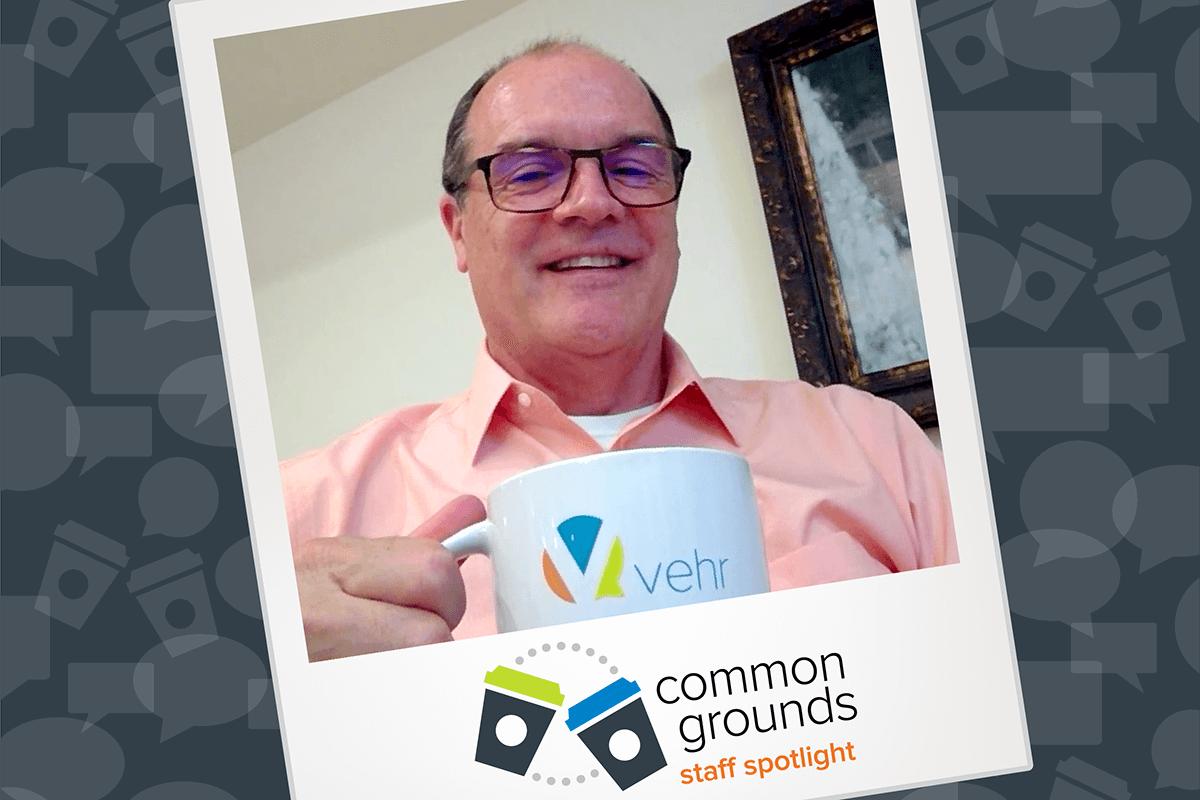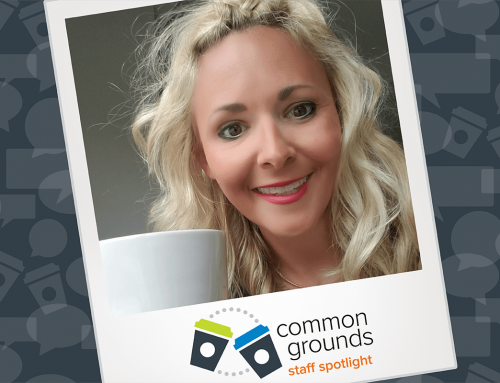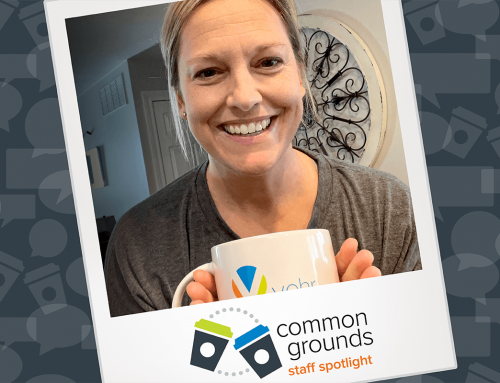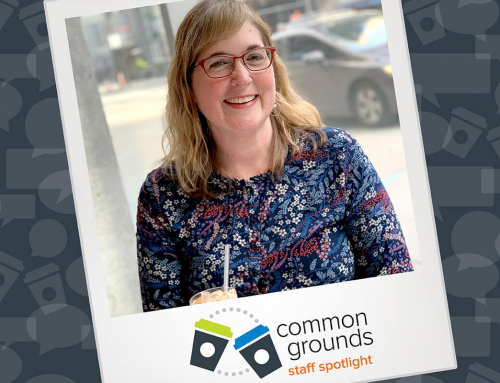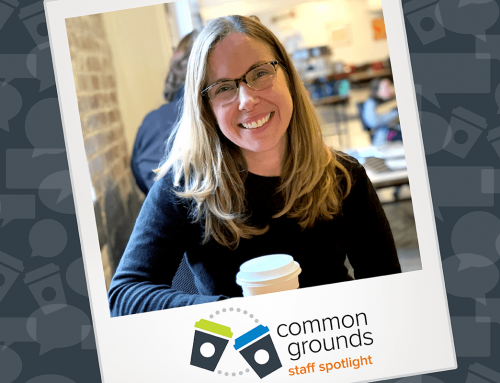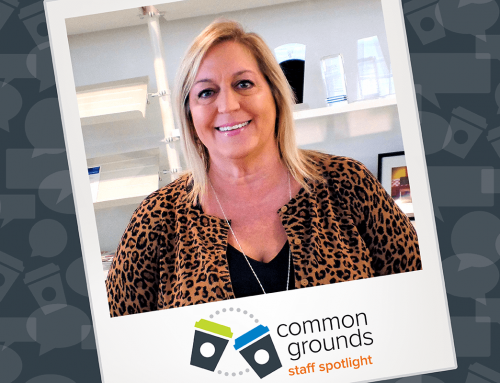COVID-19 has changed our relationships, the way we conduct business, and even how we catch up over coffee. In this special installment of Common Grounds, I sat down with Nick Vehr in our very own “Zoom café” to discuss how the virus has affected business owners and what Vehr Communications is doing to help.
Hey there Nick, thanks for “grabbing coffee” with me. You’ve long been heralded for your work in crisis communications, was that always a passion of yours?
Thanks for having me, Max! Early in my career, I realized I loved the challenge of a high- stakes environment. When I was 24, I was the campaign manager for a member of congress on the eastern side of Cincinnati. Every day was something new, every day was interacting with media. Every day was thinking “what’s the situation, what are the options in terms of what that reporter might be asking and what’s the response?” and I realized that having the ability to think through those things strategically and under intense pressure is what companies so often need.
Some companies might go a decade without having a crisis — a severe and unplanned business disruption — something that knocks them back on their heels and forces them out of their comfort zone. We do it much more frequently here. That experience allows us to be that objective and dispassionate resource to a company they so desperately need in such a situation.
When you compare COVID-19 to crises that you’ve worked through in the past, what’s different?
All crises have the same fundamental timeline. You’ve got the time before the crisis, what we might call “normal,” then you have some type of unexpected business disruption, and then you have to go through the resolution until you return to a place of normalcy.
With that said, COVID-19 is unprecedented in a lot of ways. I’ve heard many people talk about how we haven’t seen something like this in a hundred-plus years — since the Spanish Flu of 1918. They would be right to say that, but the internet didn’t exist in 1918. The telephone was still very much evolving. The ability to communicate to audiences a 100+ years ago was very, very different. Today, everyone expects the top brass to know the answers, and communicate their answers immediately. The tough part is that the top brass really doesn’t have all the answers, even the CDC can only make projections. So, to answer your question, this crisis is truly unprecedented, not just because of its severity, but because the technology we have today just magnifies everything about something of this scale.
What advice do you have for other c-suite executives or professionals who be struggling to adapt to these circumstances?
Make decisions about what you know, but don’t spend too much time and energy on the things that can’t be determined right now. It’s good to scenario plan but understand that some decision making just can’t be made without information that is not yet available. This means that all of your planning horizons have to be very short. Conventionally, we think about our businesses on a quarterly and annual basis as we look ahead. Now we’re thinking about it on a weekly and monthly basis. There are plenty of businesses out there who are looking at this situation wide-eyed and worried about what comes next. It’s with that in mind that we developed our COVID-19 Communicator’s playbook, to offer businesses the next steps they can take in navigating the remainder of this crisis.
And what do those next steps entail?
What our playbook really does is say to people that in times of ambiguity, there is a process that can reduce the uncertainty. It doesn’t eliminate uncertainty, but it can mitigate it. It enables them to focus on critical areas.
The first phase of this is to determine what your team members collectively know as fact regarding the future of your business and what uncertainties remain. From there, the attention needs to turn to your stakeholders and determining what it is that they expect from your business in these difficult times. It is at that point, when you marry those two components, that you can begin to create content that moves people along the continuum into a place of certainty and comfort. Your relationship with them will become that much stronger.
So much of this playbook discusses embracing opportunities that lie ahead. What kind of opportunities do you see in a business disruption like COVID-19?
There is a real opportunity in an environment like this to take an aggressive and comprehensive review of your business to determine if it’s on track and to determine what, how, and when you should be communicating with the audiences that matter most to your business. It’s because of this that our playbook offers a 100-day communicator’s reset plan, where we can take professionals through our multi-step process to help reach a deeper understanding of their objectives, review their key messaging and assess the effectiveness of their communication channels.
Our plan helps clients refine or re-develop their strategies and tactics with a very clear set of deliverables.
In the past few months we’ve seen a massive shift in consumer behavior and in our everyday way of life. Of all the consumer trends born out of these strange times, are there any that you think are here to stay?
You know I was just recently speaking with the CEO of one of our clients, and we were talking about that exact thing. What is the new normal going to be? It’s too soon to tell.
People are still going to go to a football game on a Saturday afternoon. They may not do it this year, but they will certainly do it next year. People are still going to go to a concert. They may not do it in June, July or August, but they may in September, October or November. People will still go out to dinner. Now, maybe the restaurants will be different, fewer guests sitting at tables that are farther apart, but people will acclimate.
But there are clearly those things that are going to change for good. Going to trade shows, having everyone fly into town for a big meeting, hopping on a Zoom call instead of a plane, these things may forever change. It’s hard to say exactly what will change from the day before the COVID 19 crisis was declared to the day after it’s declared defeated, because that’s not a clear-cut date. All 50 states are on a different schedule from one another. The rules for Ohio may not match the rules for Kentucky.
In short, were going to be in this crisis, to some degree, for quite some time. I think the full resolution of it to where we get back to what we consider life as normal is both unpredictable and pretty far away.
If you could go back to the start of this lockdown and tell yourself one thing, what would it be?
What I would need to tell myself is that I need to focus on the things I truly believe I can control: the well-being of the people who work in our company and the well-being of our clients.
Starting with our company, it is imperative that we be able to take care of ourselves, our families and, ultimately, one another. It’s why we started doing two full staff Zoom calls a week, it’s why we have one-on-one formal and informal touch-bases from time to time it’s why we have an office-wide dance party Zoom call every Friday afternoon. All those things are a part of taking care of each other and being more intentional in the ways that we communicate with one another. We have to be aware and sensitive to the fact that we have lots of people in different situations, from moms at home with kids to employees who take care of their parents to employees whose health might be at higher risk.
But we also have to take care of our clients. Not just because we love them, but because without them we can’t take care of each other. Times like these are challenging, but they offer us a chance to reinforce the relationships we have with our clients so that when we all come out of this, we have a stronger partnership than ever before.
Last but not least, what does your coffee routine look like, and how has it changed?
Full disclosure, I’m a tea drinker, but honestly my routine really hasn’t changed all that much. Usually, I get to the office, heat up the water and make a cup of tea. Now, rather than drive to work, I make a cup of tea in my kitchen, walk down a flight of stairs, and just hop on a Zoom call like this one and get to work. The only difference now is that I’m driving less and taking my dog for longer morning walks. He’s a happier pooch.
